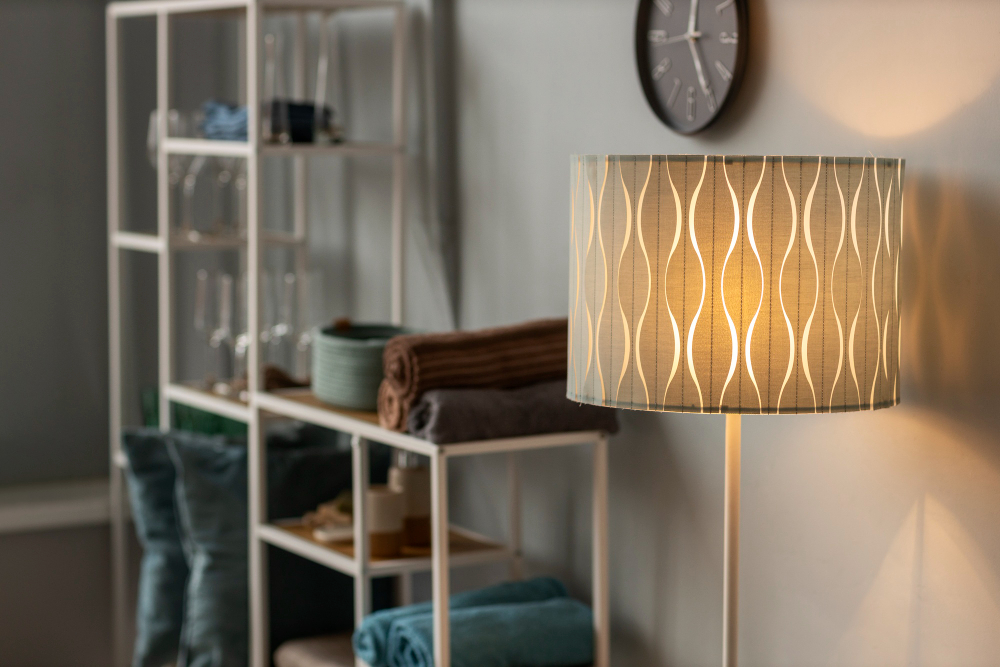Ever notice your lights start flickering or an outlet stops working for no clear reason? These may seem like small household annoyances, but they’re often clues that your home’s electrical system needs attention. Learning to spot the signs of electrical problems can save you from expensive repairs or even protect your home from dangerous hazards like fires. Whether you’re dealing with flickering lights, tripped breakers, or a shocking surprise from an outlet, it’s important to stay informed and know when to call in expert help.
This guide will help you understand the most common electrical problems found in homes today, what might be causing them, and what steps you can take to keep your home and family safe. By the end, you’ll feel empowered to take action and recognize when it’s time to bring in a licensed electrician.
Common Signs of Home Electrical Issues
Many electrical problems stem from aging equipment, improper installations, or overloaded circuits. While some issues are benign, others signal underlying hazards that shouldn’t be ignored. Here are the warning signs every homeowner should watch for:
Flickering Lights
Flickering lights might seem like a small nuisance, but they can actually signal a range of electrical issues, some minor and some serious.
Common Causes
- Loose connections: A bulb not seated correctly or a plug that isn’t firmly in its socket can interrupt the circuit and cause your lights to flicker. Sometimes, the wiring in the fixture or switch itself has worked loose over time.
- Overloaded circuits: If your lights flicker when a large appliance (like an air conditioner or microwave) turns on, it might mean your electrical panel is being asked to deliver more power than it safely can. Many modern homes have 200-amp panels, but older homes often have 100- or 150-amp panels. These lower-capacity panels can be easily overloaded, especially if high-demand appliances have been added without upgrading the electrical system.
- Corroded wiring: In older homes, wire connections at light fixtures or switches can corrode over time. This can disrupt the electrical flow and cause flickering lights.
- Breaker box issues: If the lights in your entire house dim or flicker, the root cause may be found in your breaker box or main electrical panel.
What You Should Do
- Try changing the bulb or tightening it in its socket.
- Observe when the flickering happens. If it’s tied to appliances or affects multiple lights, don’t ignore it.
- Call McQuillan for a professional inspection if flickering happens regularly or across several circuits in the home.
Burned Out or Frequently Blown Light Bulbs
Light bulbs naturally burn out after a while, but if you’re replacing bulbs more often than seems reasonable, that points to a bigger problem.
Causes
- Overheating: Fixtures with poor airflow can trap heat, which may shorten the life of light bulbs. While energy-efficient LEDs usually handle heat better than older bulbs, using LEDs not rated for enclosed or poorly ventilated fixtures can cause them to overheat and burn out sooner.
- Loose sockets: A loose or corroded socket connection can cause overheating and rapid bulb failure.
- Incorrect bulbs: Installing the wrong bulb wattage for your fixture’s rating can cause excessive heat and reduce bulb lifespan.
Safety Steps
- Use the correct wattage for your light fixtures and stick to bulbs designed for enclosed spaces, if necessary.
- Call McQuillan if bulbs burn out unusually fast or if you see any signs of charring or melting inside the fixture.
Outlets and Light Switches That Don’t Work
Ever discover that a wall outlet or light switch suddenly stops working? It’s easy to shrug it off, but failing outlets or switches are warning signs of deeper electrical issues.
Why Outlets and Switches Fail
- Worn-out hardware: Years of plugging and unplugging devices or flipping switches can wear out the internal contacts.
- Loose or degraded wiring: Connections behind outlets and switches can loosen with age, disrupting the flow of electricity.
- Tripped circuit: Sometimes, a simple tripped breaker (caused by a recent overload or short) can knock out an outlet or switch.
Why It Matters
Attempting DIY repairs without shutting off power at the breaker is extremely risky and can result in dangerous electrical shock. This is a task best left to trained electricians.
Warm or Hot Outlets and Switches
Feeling heat when you touch an electrical outlet or switch? That’s not normal and shouldn’t be ignored.
When to Worry
- Overheating indicates trouble: Most outlets may be slightly warm if a heavy-duty device is running, but they should never be hot to the touch.
- Loose or damaged wires can create resistance: This resistance generates heat that may melt wire insulation, increasing the risk of a fire.
- Dimmer switches: Some dimmer switch covers may feel a bit warm but should never be uncomfortably hot.
Immediate Actions
- Unplug all devices from the hot outlet and stop using it.
- Shut off the circuit at the breaker if you detect significant warmth, a burning smell, or see any discoloration.
- Contact an electrician to safely diagnose the issue before you use those switches or outlets again.
Shocks When Touching Outlets, Switches, or Appliances
A small zap of static is normal now and then, but a strong or recurring electrical shock from an outlet or switch is a serious red flag.
What Causes Electrical Shocks
- Improper or missing grounding: Without proper grounding, your electrical system can’t redirect excess electricity safely away from people, devices, and appliances.
- Damaged wires or outlets: Worn insulation or loose wiring allows electricity to “escape” where it shouldn’t.
- DIY or outdated wiring: Old homes or amateur wiring projects are more likely to have grounding problems.
If You Feel a Shock
- Stop using the outlet, switch, or appliance immediately.
- Promptly shut off power at the breaker to that circuit (as soon as you can do so safely).
- Do not attempt to open or repair the outlet yourself.
- Schedule a professional inspection to identify and fix the underlying issue.
Circuit Breakers That Keep Tripping
Your circuit breaker exists to protect your home from dangerous overloads and short circuits by shutting off power when things get risky. But if you find yourself making frequent trips to the breaker box, it’s time to pay attention.
Why Breakers Trip
- Overloaded circuits: Plug in too many electronics or run multiple high-power appliances on the same circuit, and it may trip to avoid overheating.
- Short circuits: When damaged wires inside of walls or outlets touch each other in a way they shouldn’t— such as a live wire connecting to another wire— it creates an unsafe path for electricity. This sudden high current causes the breaker to trip and shut off power to that circuit, keeping your home safe from electrical fire or damage.
- Faulty appliances: Malfunctioning devices can overload a circuit as soon as they’re plugged in.
What to Do
- Unplug a few devices before resetting the breaker. If the breaker stays on, the overload was temporary.
- If the breaker trips repeatedly, leave it off and call an electrician. Constantly resetting a tripping breaker can expose your system to further damage or fire risks.
Burning Smell, Smoke, or Scorched Outlets
A burning smell, scorched outlet cover, or smoke coming from an outlet is an urgent emergency.
Why It Happens
- Short circuits, overloaded wires, or sparks: These indicate that electricity is flowing where it shouldn’t, causing rapid heating and melting insulation.
- Melted insulation: This can lead to direct contact between “hot” and “neutral” wires, greatly raising the risk of fire.
What to Do Right Now
- Unplug everything from the affected outlet immediately.
- Shut off the circuit breaker for that part of the house.
- Call McQuillan for emergency electrical service.
Pro Tips for Electrical Safety in Your Home
- Never ignore unusual noises like buzzing or popping from your breaker panel, outlets, or switches.
- If you experience any of these issues in different areas throughout your home, it may point to a systemic problem needing whole-home attention.
- Avoid DIY electrical work unless you’re trained, and always turn off the breaker before inspecting outlets or fixtures.
- Schedule regular electrical safety inspections to stay ahead of hidden hazards, especially in older homes.
What to Do When You Spot Electrical Problems
When you notice any of these warning signs, it’s best not to wait until things escalate. Addressing issues early can be the difference between a quick repair and a much larger emergency. While some fixes may seem straightforward, working with electricity always carries risks if you’re not experienced or properly equipped. Rather than trying to make repairs yourself, reach out to an electrician for help. They have the needed skills and knowledge to repair any issues and make sure your electrical system is up to code.
Stay Safe and Comfortable with McQuillan’s Trusted Electrical Repair Solutions
Electrical problems never show up at a convenient time, but they’re always better addressed sooner rather than later. McQuillan has been a staple of the St Paul community for decades, offering licensed and insured electrical repair, maintenance, and emergency service you can trust. Our certified technicians handle everything from stubborn outlets to whole-home rewiring, and every job is covered by our 100% satisfaction guarantee.
Don’t ignore flickering lights, warm outlets, or tripping breakers. Contact McQuillan today to schedule your electrical repair or safety inspection and restore peace of mind to your home.



